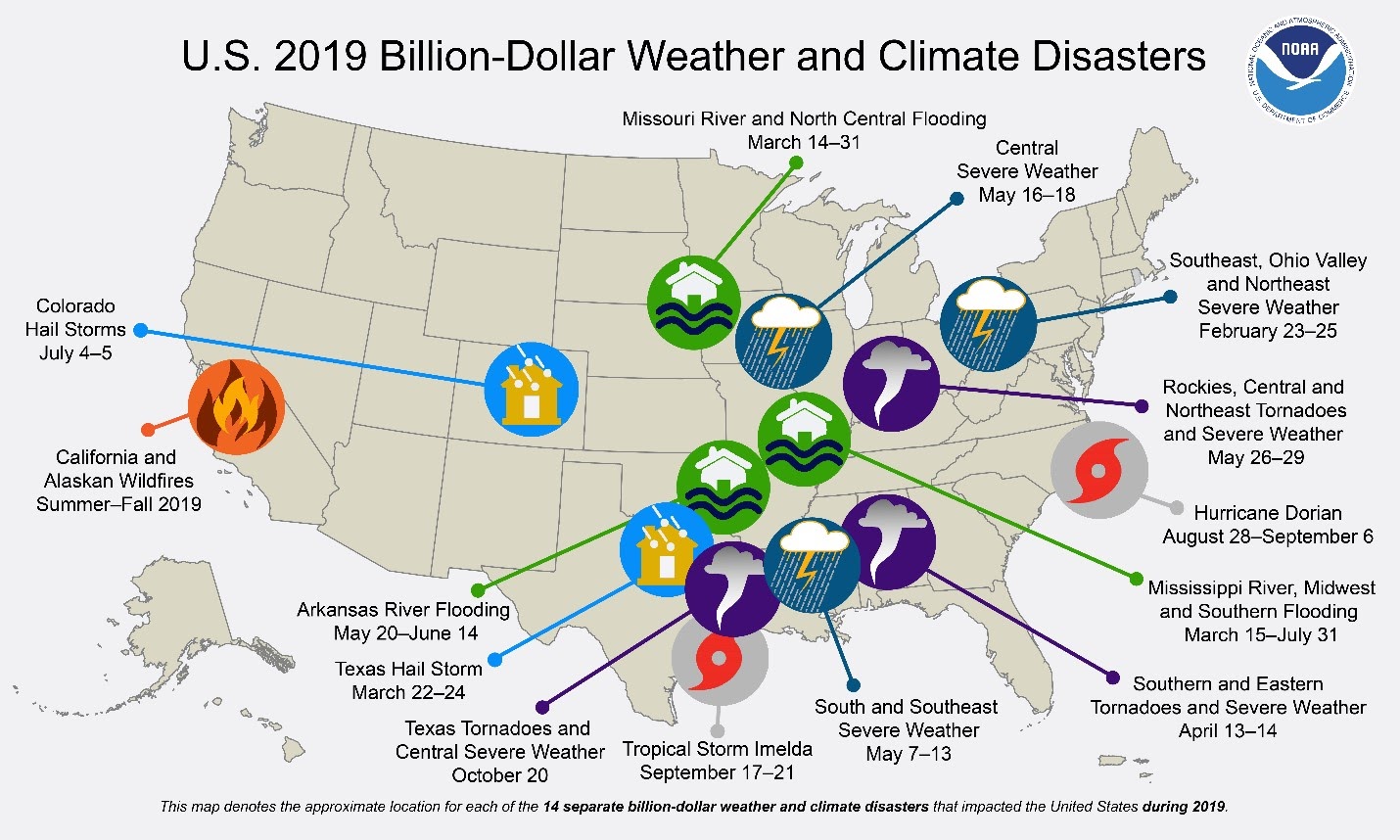Let’s take a look at how climate change could affect municipal bonds and why investors should consider climate change risks when building their portfolios.
Be sure to check out our Education section to learn more about municipal bonds.
Climate Change Risks
A McKinsey report highlights some key impacts:
- Habitability: Heat stress and other climate-driven changes could affect the ability for humans to work outdoors while shifting disease vectors toward the poles.
- Food Systems: Food production could be disrupted by drought conditions, extreme temperatures or flooding in some regions.
- Physical Assets: Physical assets like buildings could be damaged or destroyed by extreme flooding, fires and other hazards.
- Infrastructure: Infrastructure assets could experience disruption and have a knock-on effect on other sectors that rely on them.
- Nature: Climate change could destroy glaciers, forests and ocean ecosystems that humans rely on for habitat and economic activity.

As these risks rise, investors are increasingly pricing them into financial assets. With nearly a third of institutional investors (according to a recent study by the European Corporate Governance Institute) considering physical climate risks important for portfolio management decisions, there’s little doubt that their actions are impacting the risk premiums assigned to affected corporate bonds, municipal bonds and other assets.
Impact on Muni Bond Prices
A separate paper, Sea Level Rise Exposure and Municipal Bond Yields, found that municipal bond investors can expect a one standard deviation increase in sea level rise (SLR) exposure to correspond with a reduction of 2 to 5% in the present value, or an increase of 1 to 3% in the volatility of local government cash flows supporting debt repayment.
Investor attention appears to be a driving factor since the difference in issuance costs on bonds issued by climate- and non-climate-affected counties increased after the release of the 2006 Stern Review on climate change. In addition, an upward revision in SLR projections in 2013 led muni bond markets to price in increased risk of SLR exposure.
The effects of climate change have been limited to long-term municipal bonds, according to Painter, with short-term muni bonds showing a negligible impact. Of course, these dynamics could change in the future as extreme weather events become more common and the risk of climate change becomes a near-term concern.
How to Hedge Your Portfolio
Aside from avoiding climate-impacted bonds, investors may also want to consider adding green municipal bonds to their portfolios. These bonds are issued by municipalities to finance projects designed to mitigate or adapt to climate change. Fixed income investors can use these bonds as part of a socially responsible investment (SRI) strategy.
Don’t forget to check out this article to know more about the recent wave of green debt.
The Bottom Line
Sign up for our free newsletter to get the latest news on municipal bonds delivered to your inbox.

